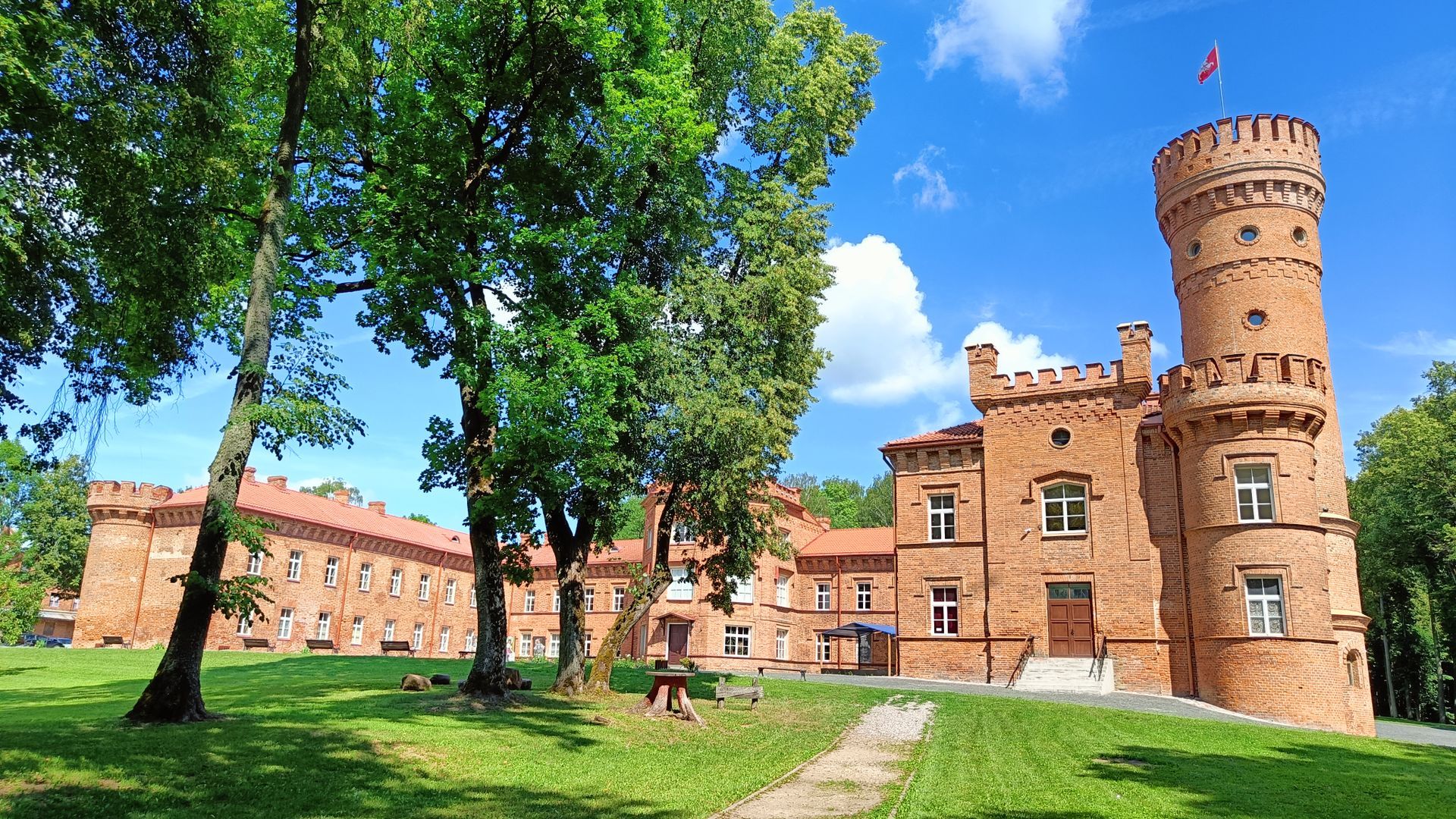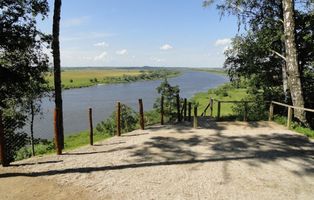
21 people was here
0 reviews
When walking along the right bank of the Nemunas and passing the avenue of the old lindens, we enter the Park of Raudonė. While pacing across it, we also see the monuments of nature - a chestnut counting its age into a second century and its diameter to two stout men and the old linden of Raudonė and a black poplar. It is unfortunate that the Oak of Gediminas, which is enveloped by legends, did not endure the burden of years...
Raudonė Castle opens before the eyes. What a story it reminds of! The castle was accompanied by fires and frequently changing owners, but its beauty has embellished the town of Raudonė for more than 400 years.
The history of this impressive palace began with the Kirschenshtein family. A forest merchant Krishpin Kirschenstein built a residence of Renaissance style in the end of the 16th century. Later, the Olendski family settled in the castle, who rebuilt the castle even several times and gave it the features of Classicism. The present appearance of Raudonė Castle dates back to the 19th century, after the palace was repurchased by Duke Platon Zubov. His daughter Sofia Pierch Kaisarova reconstructed the castle, giving it Neo- Gothic elements.
The spectacular appearance of the castle began vanishing after its hosts grew poor, and when the Second World War started, the architectural masterpiece was severely devastated. Still, the community of the town did not allow this architectural monument to vanish: the castle was rebuilt, and for over 50 years it is full of the laughter of pupils of Raudonė Secondary School. The painful past did not obscure the romantic aura of Raudonė Castle and allowed the birth of eternal love in its vicinities. The legends based on historical facts and belief of the locals is breathtaking, while the red brick walls still quietly protect the stories of the people who lived here.
In the beginning of the 20th century a young grand-daughter of Sofia Pierch Kaisarova, also named Sofia, due to her poor health left for the beautiful Madeira Island to seek treatment. Here she met José Carlos de Faria e Castro, a Portuguese writer. Led by love, the southern man followed his beloved lady to her harsh homeland. Unfortunately, after a happy life that lasted 15 years Sofia de Faria e Castro died due to health problems. Although left alone, the Portuguese husband was not about to move from the castle - he fell in love with Raudonė. Having lived another 23 years, he passed away on a mountain next to Raudonėnai. The romantic, yet tragic legends move us back to even older times. It is said that the Duchess Balanda, the daughter of Kęstutis, Duke of Lithuania, fell in love with a prisoner crusader. The young girl living in the Castle used to secretly date the enemy at nights. Having found it out, the Duke cursed and killed his daughter. The locals still swear they can hear Balanda mourn in the silent bustling of leaves at dark nights. Next we step to the 33.5-meter-high Castle Tower. Upon reaching the top, you can overlook a magical view, covering the smallest windings of the Nemunas, the majestic mounds and tree alleys at one glimpse. It is difficult to refuse to believe in romance in this place.
© Nemuno kelias
Loading...
Loading...
©2025 trip.lt


